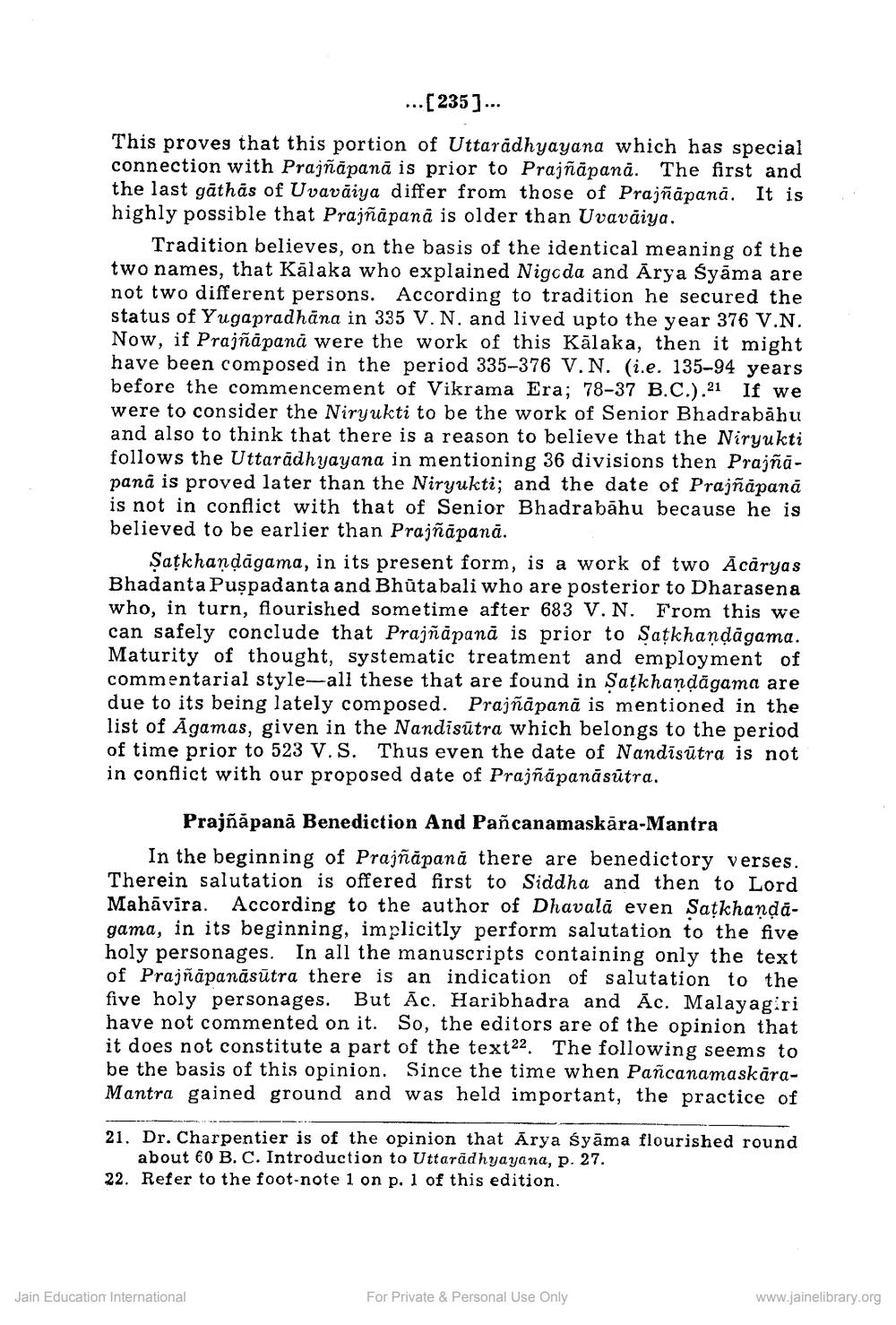________________
... [235]...
This proves that this portion of Uttaradhyayana which has special connection with Prajñāpanā is prior to Prajñāpanā. The first and the last găthas of Uvaväiya differ from those of Prajñāpanā. It is highly possible that Prajñāpanā is older than Uvaváiya.
Tradition believes, on the basis of the identical meaning of the two names, that Kālaka who explained Nigcda and Arya Śyāma are not two different persons. According to tradition he secured the status of Yugapradhana in 335 V. N. and lived upto the year 376 V.N. Now, if Prajñāpană were the work of this Kalaka, then it might have been composed in the period 335-376 V.N. (i.e. 135-94 years before the commencement of Vikrama Era; 78-37 B.C.).21 If we were to consider the Niryukti to be the work of Senior Bhadrababu and also to think that there is a reason to believe that the Niryukti follows the Uttaradhyayana in mentioning 36 divisions then Prajñapanā is proved later than the Niryukti; and the date of Prajñāpanā is not in conflict with that of Senior Bhadrabahu because he is believed to be earlier than Prajñāpanā.
Satkhandāgama, in its present form, is a work of two Ācāryas Bhadanta Puspadanta and Bhūta bali who are posterior to Dharasena who, in turn, flourished sometime after 683 V.N. From this we can safely conclude that Prajñāpanā is prior to Satkhandagama. Maturity of thought, systematic treatment and employment of commentarial style-all these that are found in Satkhandāgama are due to its being lately composed. Prajñāpanā is mentioned in the list of Agamas, given in the Nandisūtra which belongs to the period of time prior to 523 V.S. Thus even the date of Nandisūtra is not in conflict with our proposed date of Prajñāpanāsūtra.
Prajñāpanā Benediction And Pañcanamaskāra-Mantra In the beginning of Prajñāpan, there are benedictory verses. Therein salutation is offered first to Siddha and then to Lord Mahāvira. According to the author of Dhavalā even Satkhandagama, in its beginning, implicitly perform salutation to the five holy personages. In all the manuscripts containing only the text of Prajñāpanāsūtra there is an indication of salutation to the five holy personages. But Āc. Haribhadra and Āc. Malayagiri have not commented on it. So, the editors are of the opinion that it does not constitute a part of the text22. The following seems to be the basis of this opinion. Since the time when PañcanamaskāraMantra gained ground and was held important, the practice of
21. Dr. Charpentier is of the opinion that Ārya śyāma flourished round
about €0 B. C. Introduction to Uttarādhyayana, p. 27. 22. Refer to the foot-note 1 on p. 1 of this edition.
Jain Education International
For Private & Personal Use Only
www.jainelibrary.org




